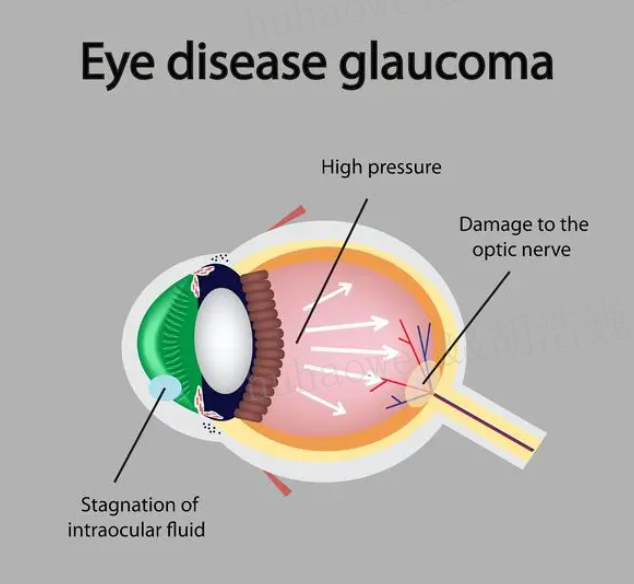Glaucoma, caused by high intraocular pressure, is a common eye disease that can cause serious harm to eye health if left untreated and managed. Here are some of the main harms of high intraocular pressure:
Vision impairment: High intraocular pressure puts pressure on the optic nerve, and long-term high intraocular pressure can lead to damage to the optic nerve, which in turn can lead to gradual vision loss and even blindness. Especially when glaucoma progresses to an advanced stage, the visual impairment can be irreversible.
Visual field defects: The high intraocular pressure caused by glaucoma can gradually damage the visual field and may initially affect only the marginal visual field, but as the condition progresses, the central visual field may also be impaired. This will seriously affect daily life and driving safety.
Eye pain and headache: High intraocular pressure may cause eye discomfort such as eye pain, burning sensation, etc., and may also be accompanied by headaches. These symptoms can affect the patient's quality of life.
Light sensitivity: High intraocular pressure makes the eye more sensitive to light, and patients may feel that the eye is less adaptable to bright or stimulant light sources, and is prone to stinging or glare.
Patient mental health problems: Patients with high intraocular pressure may have mental health problems such as low mood, anxiety, and depression due to impaired vision and pain and discomfort.
Limitation of daily activities: Due to the progression of glaucoma, patients may need to rely on others for assistance with some daily activities, such as dressing, moving, and caring for themselves.

Glaucoma is a serious eye condition, but fortunately, with the right treatment and management, the condition can be effectively managed and potential risks reduced. Here are some ways to cope with glaucoma:
Medications: Oral medications or eye drops can help lower eye pressure and control the condition. These medications include intraocular blood pressure lowering drugs, drugs that promote the discharge of aqueous humor, etc.
Laser treatment: Depending on the type of glaucoma, laser surgery may be used to promote aqueous humor drainage or reduce aqueous humor production, thereby lowering intraocular pressure.
Surgical treatment: For severe glaucoma that cannot be effectively controlled with medication or laser treatment, surgical treatment such as filtration surgery, implantable drainage devices, etc. may be required.
In addition, regular eye exams and monitoring are very important for people with high intraocular pressure. Early detection and intervention can lead to better management of the condition and reduce the risk of vision impairment.
In conclusion, high intraocular pressure can lead to a variety of eye problems, including vision impairment, visual field defects, eye pain, etc. With the right treatment and management, the condition can be controlled, harm can be reduced, and the quality of life of patients can be improved. If you have eye discomfort or symptoms that suspect high intraocular pressure, seek medical attention and consult a medical professional. (This article is reprinted from "Chinese medicine doctor Ma Xiaoli")


